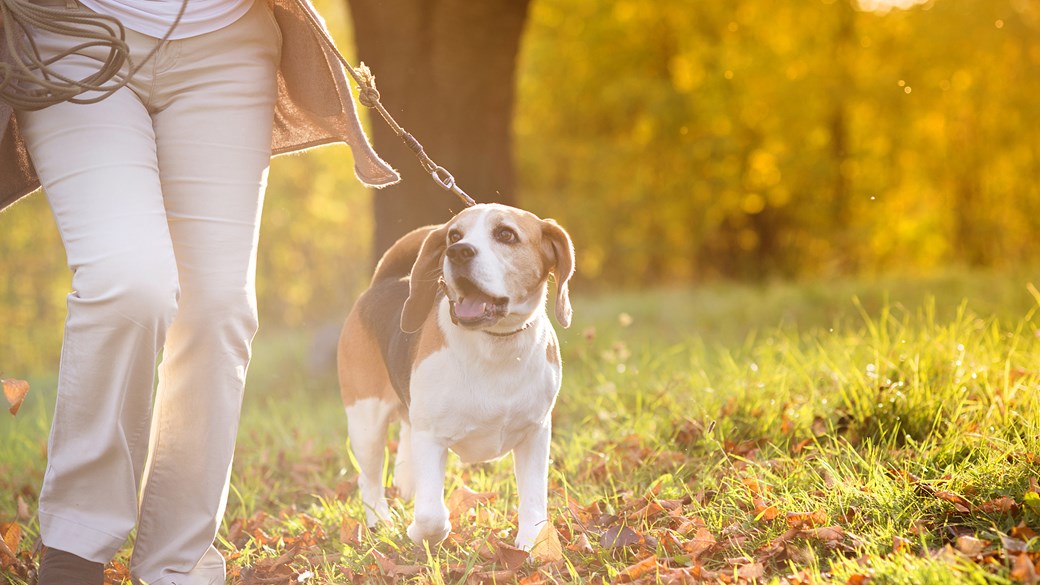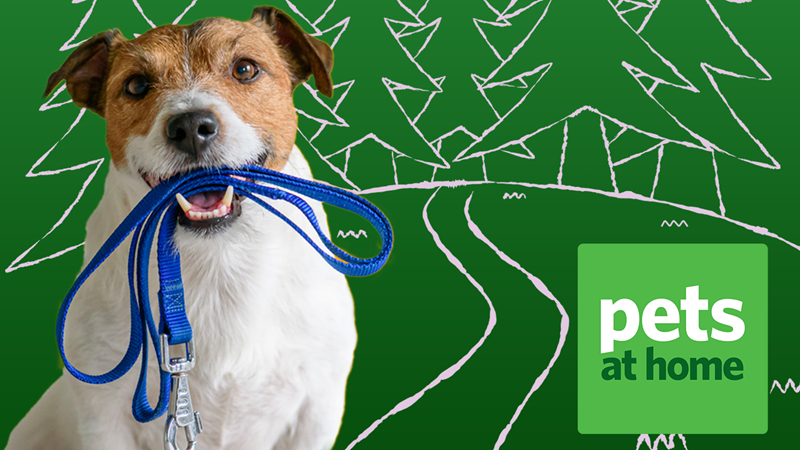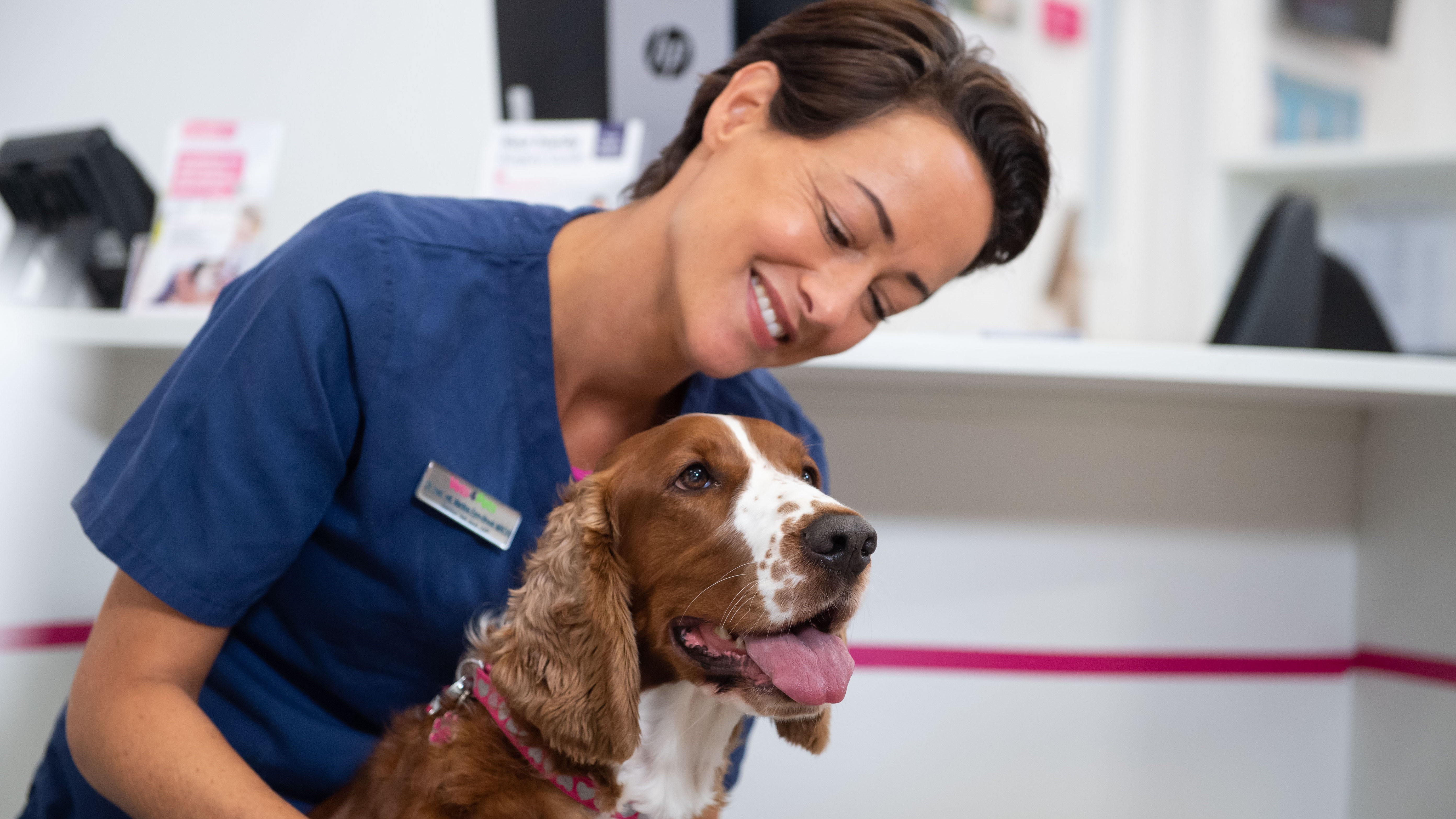
Walking With Your Dog
Depending on how far you’re walking and also, on the weather, you’ll want to make sure you’ve got everything you might need for a safe and successful dog walk.
Whether you’re just popping around the block before you settle down for the evening, or you’re heading out to explore new countryside, time spent walking with your dog is a great way to bond, while enjoying fresh air and exercise.
Read our top dog training tips here.
Getting equipped for walking
Depending on how far you’re walking and also, on the weather, you’ll want to make sure you’ve got everything you might need for a safe and successful dog walk.
Dog walking checklist
These are essential to have with you whenever you venture out with your dog. Whether perfumed, compostable, or ones with handles, you can’t afford to be without a stash at all times. If you like to keep your hands free you can buy pouches like this one here from Pets at Home that can carry full bags safely until you reach a bin.
Your dog will need an ID tag attached to their collar. The tag must show your name, address and postcode. It’s also recommended you add your mobile phone number and some like to put their vet’s phone number on the tag too.
For dog walking on a lead, your pet will be most comfortable wearing a properly fitted V- or Y- fronted harness that allows their shoulders to move freely and takes pressure away from their neck.
Some dogs pull strongly in a harness. If this sounds like your furry friend, you might find it easier to try a head collar instead. Different designs suit individual dogs and it might be worth trying a few on to see which suits your dog’s face shape best. Even when properly fitted, they can sometimes slip off, so always buy a short, connecting strap that links them to your dog’s collar, just in case!
If your dog likes to play with a toy on walks, take one along – a favourite toy can be a great distraction if you need to grab their attention.
A few treats in your pocket wouldn’t go amiss if you plan to do a few moments of training during the walk, or to use as a reward when your dog comes back to you.
Dogs must be on a short lead for walking safely beside roads. You could also carry an extendable lead, which can be great for dogs who don’t always come back to you when you call them. Always attach them to the harness and never to the collar, or your dog might hurt their neck if they suddenly reach the extent of the line. Extendable leads allow your dog the freedom to go at their own pace so they can sniff and explore. They should only be used where you have good visibility, so that nobody can get caught up in the lead if they want to pass between you and your dog, and so that the lead doesn’t snag on trees or undergrowth.
You won’t need to carry water with you if you’re only going to be out for half an hour but, if you’re planning on going far, or if the weather is warm, carry water for your dog as well as for yourself. Natural water, such as puddles and ponds, isn’t always safe for your dog to drink. Water bowls that fold flat or that attach to water bottles and are easy to carry when you’re walking, are a great addition to your kit!
Remember, it’s always a good idea to carry your phone with you, as well as a map, if you’re venturing into unknown areas.
Choosing the most suitable walks for your dog
When you’re planning to go out for a walk with your dog, take into account your dog’s breed and age. Old dogs may do better with frequent, short walks to keep their joints moving and prevent them from stiffening up. Likewise, puppies can only manage short walks while their bones are still growing and their joints are developing. Your vet can advise you on the appropriate amount and type of exercise for your particular dog’s age and breed.
If your dog has been taught to come back to you when you call them and they’ve been well socialised, they’ll enjoy the freedom of being allowed to run around and explore, or play with other dogs.
If your dog’s recall isn’t quite there, you could consider giving them some freedom by using a long-line. This is just as it sounds, a long lead or line attached to a dog’s harness, that offers them more freedom but that allows you to reel them in if they don’t return immediately when you call them. Long-lines make it very easy for the dog to do the correct thing when you call them. This always earns them a reward and they start to learn that being called in doesn’t mean the fun has to stop.
If you’re going to let your dog run off-lead, then always consider other people. If you see a dog and owner approaching and they put their dog back on a lead when they see you, it’s best to do the same until you’ve passed one another safely. Their dog may not be comfortable around other dogs and, if your dog bounds up to say hello, or tries to sniff them, it could end up in a lot of noise, a fight, or an angry dog owner.
You might see dogs wearing yellow jackets or doggy bandanas – this is a signal to other people that the dog needs space and isn’t comfortable with being approached.
When dogs are on their leads, they can’t get away if they don’t want to interact, and this can make them worried. It’s often why small dogs can make a lot of noise while on their leads and also why it can be trouble if a loose dog approaches one who’s on a lead. If you think there’s still lots of work to do on your dog’s recall or socialisation, it’s better to keep on with the training and to use a lead in public places.
When passing other dogs on a walk, especially dogs your own dog doesn’t know, it’s a good idea to keep them moving. Friendly dogs and owners might be happy to stop to say hello, but even so, limiting the chat between the dogs to under five seconds should give them enough time to acknowledge one another, but not long enough to develop any tension, should one of them feel uncomfortable.
Some dogs seem to know when you’ve decided it’s time for home and become a bit tricky to catch. You can help with this by practicing putting on their lead at random times during a walk, rewarding with a high value treat or a toy, and releasing them again. This helps in two ways: it prevents them from predicting when on a walk the fun is about to stop; and it shows them that having their lead put on can be a rewarding experience – literally!
Risks to watch out for when walking your dog
Dogs have some adaptations to the cold in that the circulatory system in their footpads helps prevent them from freezing. When a dog’s feet get cold, arteries carrying warm blood from the heart transfer this heat to the blood in the veins. Winter roads and pavements do pose a threat to dogs’ paws when they’re salted and gritted to prevent them icing over. So, if you take your dog out on de-iced pavements during the winter, you could treat them to some doggy boots, or you can wash and dry their paws, using warm water, when you get home.
Your walks might take you past spots where your dog could have a swim. If you don’t know the area, you might be safest keeping them out of the water until you’ve found out more. It’s always best only to let your dog swim in places that you know are safe and that are used by other dog walkers; and if your dog isn’t used to swimming, stick to water that’s shallow enough for them to gain confidence and paddle, or consider taking them to a doggy swimming pool, where they can learn safely under supervision. Never allow your dog to drink or come into contact with water that has a film of algae on the surface, or that looks greenish and cloudy. Blue-green algae can cause serious and sometimes fatal consequences.
If you’re going for a walk in the countryside, check out the route before you go, and stick to the official rights of way so you don’t damage any crops or disturb nesting birds. Dogs must always be on a short lead around livestock. If you’re not sure whether a field contains animals, keep your dog’s lead on, to be on the safe side. Even the gentlest dog, or a very small one, can suddenly be overwhelmed by the need to chase and bring down prey if they see animals running away from them. Even if a dog doesn’t manage to bite or catch the animal they’re chasing, the stress can lead to pregnant ewes losing their lambs. It’s just not worth the risk.
Cattle can be inquisitive and are often best avoided altogether if you have your dog with you. They may not mean any harm, but if they get excited, they like to run and kick up their heels, which can be alarming, at best! Cows with calves are definitely not something with which to take any chances. They may consider your dog a threat and behave aggressively towards you. It’s far better to find an alternative route!
Always follow The Countryside Code when you’re out exploring with your pal.
Dogs can enjoy a lovely day by the sea with you, as long as you pack in a little common sense along with your beach bag. Remember to:
- Keep to areas of beaches that are designated as ‘dog areas’, use your dog’s lead when walking through areas where families have set up for the day (in case your dog is tempted to run off with someone’s picnic!) and always clean up after your dog immediately.
- Check tide times so you don’t risk getting cut off by the sea.
- Watch out for animals, plants and debris that have been washed up. At best, your furry friend might decide to roll on a dead fish.
- Keep your dog cool – paddling is fun for dogs and so is swimming, if they’re confident in water and you’ve checked with lifeguards where you’re safe to let them swim. Take fresh drinking water along for your dog, too!
- Don’t be tempted to throw their toy out into the water more than a few times. Ingestion of large amounts of seawater (or fresh water) each time they grab their toy can cause serious illness and worse.
- Swallowing lots of sand, by picking up their toy repeatedly from dry sand, can cause severe digestive problems. If you’re throwing a toy for your dog, it’s safer to let it land on wet sand.
- If you’re exploring the coastal path, beware that dogs don’t always realise they’re on a clifftop. Always keep them on their lead so they’re not tempted to follow a gull off the top of the cliff!
The world is out there for you and your dog to explore. With a bit of planning and a few sensible precautions, you’ll be able to enjoy some great adventures together!
In recent years, there’s been some very hot weather during the summer. Hot weather and still or humid conditions can be dangerous for dogs if they are taken out for exercise or they’re allowed to run around the garden. Dogs can’t sweat – they cool down by panting. In very warm weather, it becomes difficult to cool down when the body is generating heat and the ambient temperature is high. When it’s humid and still, it can be surprisingly difficult for dogs to cool themselves by panting and they are also at great risk of overheating, particularly because it might not feel all that warm to us.
When the weather makes overheating a risk, it’s best to exercise dogs lightly, very early in the morning or late in the evening. If you’re unable to manage this, they’ll come to less harm by missing a few days’ walks than they will if they overheat. There are plenty of ways to occupy dogs if they aren’t being taken out. Another risk that hot weather poses for dogs is that hot pavements can damage your dog’s paws. As a rule, if you stand on a pavement in bare feet for five seconds and it starts to become uncomfortable, then it’s too hot for your dog to walk on.
Listen to our Spotify Playlist
To celebrate National Walking Month, Pets at Home have launched the perfect soundtrack to your dog walk!

Health Plans to keep your dog healthy
At Vets4Pets we offer a range of Health Plans that make essential routine treatments more affordable. You'll save money on things like annual vaccinations, flea and worm treatment and routine health check-ups.

Dog Advice
Read more of our expert dog advice to keep your dog happy and healthy.
